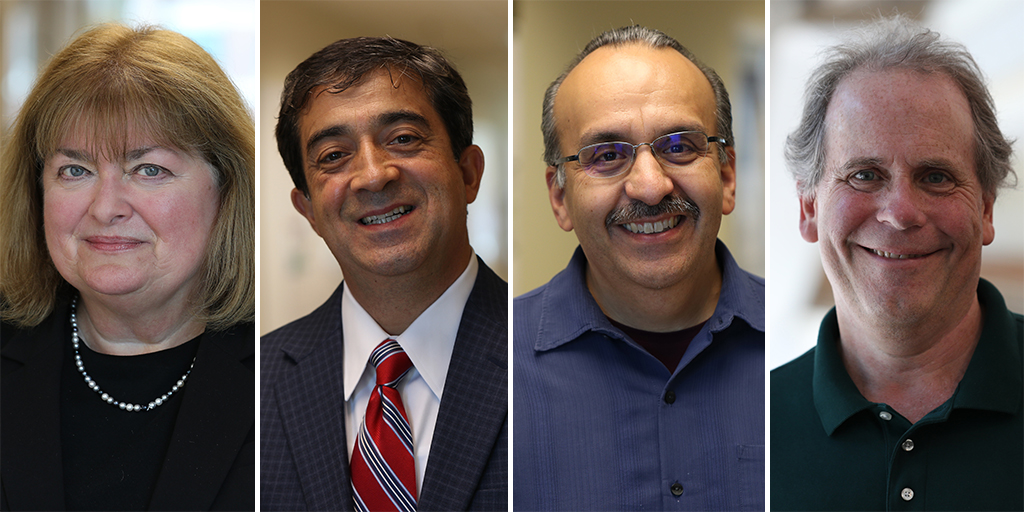Four Baylor professors who are making strides in cancer research

Each year, more than a million people in the U.S. alone are diagnosed with cancer, and millions more friends and family feel its impact. Baylor is doing something about it.
The name “Baylor” has been synonymous with healthcare for some time; think Baylor Scott & White Health, the Baylor College of Medicine, Baylor’s Louise Herrington School of Nursing, etc. Today, university researchers are making serious strides in regards to cancer research. As part of Inauguration Week earlier this month, four of these researchers shared how their callings have led to remarkable discoveries and promising results that advance detection and treatment of this complex disease.
Dr. Mary Lynn Trawick, associate professor of chemistry, is working with Dr. Kevin Pinney on ways to stop the spreading of cancer cells, or metastasis. Not only is it the major cause of death and debilitating side effects in cancer patients, but it’s also one of the most difficult aspects of cancer to stop, since it requires selectively shutting down blood flow. “Particularly, we’re looking at individual proteins called enzymes, which are secreted from the primary tumor into its environment and allow each cell to escape and travel to distant locations, which is required in metastasis,” she says.
Dr. Touradj Solouki, professor of chemistry and biochemistry, researches new, simplified and cost-effective ways to catch cancer early, such as testing saliva. “According to the latest statistics, in a few years [cancer] is supposed to actually surpass heart diseases and become the number one cause of death in the United States,” Solouki says. “There are millions of people that we know that are suffering even as we speak, so I’m very passionate about that in trying to do my part to see what we can do to address that.”
Dr. Daniel Romo, the Schotts Professor of Chemistry, directs a research group at Baylor that focuses on the chemistry and biology of natural products, leading to advances in basic cell biology and drug-led development. “These could be bacteria, sponges, all types of organisms, plants for example,” he says. “One of the things that I think inspires me as well is to think about the fact that we look at the natural world. And we look at the natural world almost like a playground, because these molecules again are found in natural sources, and so it even brings up the notion that God had the foresight to put these molecules into action, being able to give them, endow them with the ability to synthesize these molecules so we could mine them, harvest them, for being able to understand these diseases today.”
Dr. Kevin Pinney, professor of chemistry, researches metastasis prevention alongside Trawick. “It’s a highly collaborative lab, and together I think we launch a pretty daunting sort of force against this,” he said. “I think the exciting thing is that, if you look at all those stories, many of the stories of drugs that have been developed, their early roots came from university settings—from graduate, undergraduate students, post-docs, faculty members, working collaboratively, coming up with new leads and having those developed.”
(If this sort of work interests you, you can watch the professors’ entire presentation here.)
Preventing, treating and curing cancer starts with new developments, and new developments start with university research. We’re proud to call these leading cancer researchers Baylor Bears.
Sic ’em, Baylor researchers!
You might also like:
* ‘A Playground To Explore’: Baylor chemistry prof on how faith and science meet (May 2017)
* #BearsOfBaylor – “I really wanted to make sure my pre-med track was focused around people…” (Oct. 2016)
* Trailblazing Baylor alum broke ground in cancer research (Sept. 2016)
* Baylor name stands strong in the world of healthcare (April 2016)

